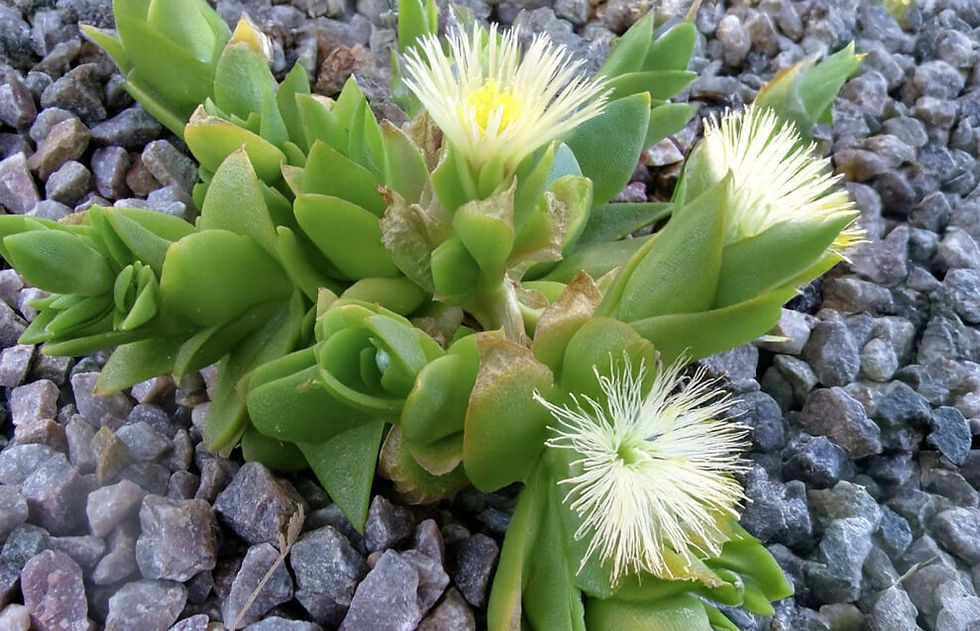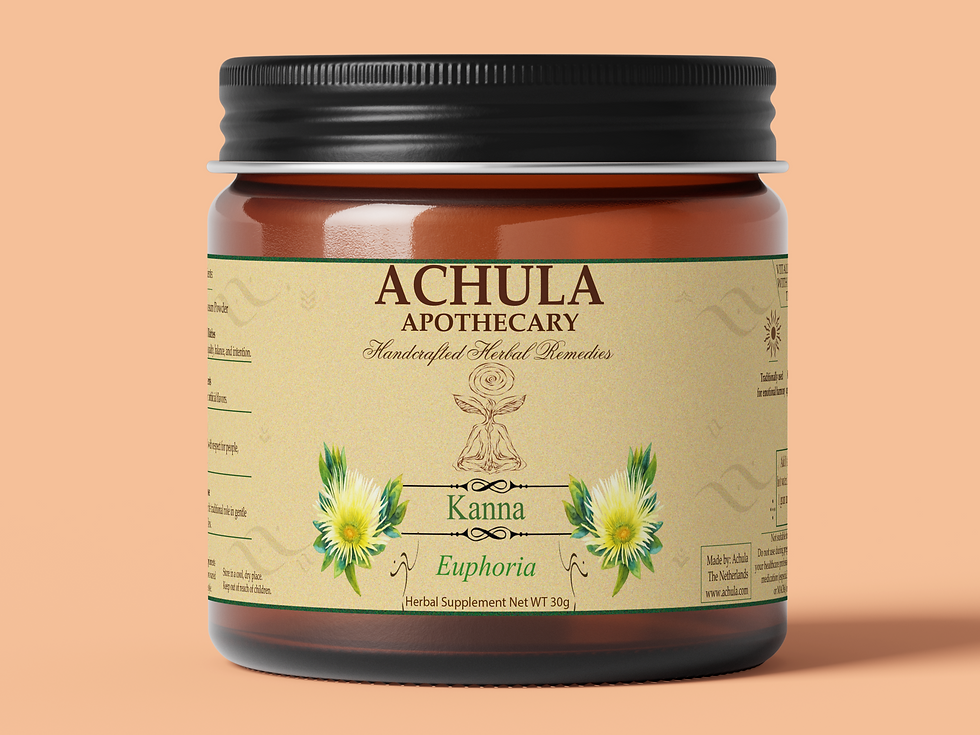How to Make Kanna Tea & Experience It Deeper
- Dave

- Jul 23
- 4 min read

In this guide, we’ll show you how to brew kanna into a soothing tea, explore how to use it orally for fuller effects, and introduce you to a ceremonial way of experiencing kanna that’s truly unforgettable.
Kanna is one of nature’s more mysterious gifts quietly, potent and deeply versatile. From calming anxiety to creating moments of heartfelt connection, this South African succulent has long been used in traditional settings and is now finding its place in modern wellness.
What Exactly Is Kanna?
Kanna, scientifically known as Sceletium tortuosum, is a succulent plant native to South Africa, traditionally chewed, smoked, or brewed by indigenous tribes like the Khoisan to calm the nerves and lift the spirit. Warriors returning from conflict would use kanna to ease the emotional weight they carried it's been a plant of healing and integration for centuries.
Modern kanna is typically fermented or dried to enhance its active compounds, the most notable being mesembrine and mesembrenone, which affect serotonin pathways in the brain.

African Origins:
Long before kanna became known to the modern wellness world, it held a revered place in the spiritual and social fabric of Khoisan culture one of the oldest continuous cultures on Earth. Known traditionally as “kougoed,” meaning “something to chew,” kanna was more than a mood-enhancer; it was a plant used to restore harmony between the individual and the tribe after emotional or physical hardship. Warriors returning from battle or hunters emerging from isolation would chew kanna communally to release trauma and reintegrate into village life.
The plant was often fermented using a method that involved burying it in animal skins, a process believed to enhance its psychoactive and empathogenic properties. In some accounts, kanna was also combined with other native herbs or inhaled as a snuff during shamanic rituals, where it was used to induce states of deep introspection, heightened social empathy, or to resolve conflict between tribe members. Oral traditions describe its use during nighttime storytelling circles, where elders and youth would chew kanna to open the heart and strengthen the communal bond through laughter, tears, and trance-like states of reflection.
Brewing Kanna: How to make Kanna Tea
Tea is a beginner-friendly way to feel kanna’s effects. It tends to bring about a grounded sense of calm, sometimes accompanied by a warm bodily glow or soft focus in the mind. Here’s how to make it:
You’ll Need:
1.5 cups of water
Your chosen dose of kanna (see below)
Juice of half a lemon
Honey or your favorite natural sweetener
Small saucepan
Strainer or tea filter
Recommended Doses:
Mild: 200mg
Moderate: 400mg
Strong: 800mg+If you're new to kanna, we recommend starting with a low to moderate dose. Higher doses may cause light nausea or dizziness if your body isn't accustomed yet.
Instructions:
Pour water into the saucepan and warm it gently do not let it boil. A soft simmer is ideal.
Add lemon juice to the water. This helps extract and enhance the active compounds.
Add your kanna dose to the pot and stir.
Let the mixture steep on low heat for 15 minutes, stirring occasionally.
Strain into a mug, add honey if desired, and enjoy slowly.
💡 Tip: Drinking kanna tea on an empty stomach enhances its effectiveness.
Sublingual Use: Holding Kanna in the Mouth
Another powerful way to take kanna is to hold a small amount under your tongue or between your gums and cheek. This bypasses digestion and sends the active compounds straight into your bloodstream. The taste is earthy, slightly bitter, and tingling. Some people find it meditative others describe it as mildly euphoric.
Here’s how to do it:
Take around 50–100mg of kanna powder or finely shredded leaf.
Place it in your mouth (under the tongue or between the gum and cheek).
Let it sit for 15–30 minutes, occasionally moving it around with your tongue.
Swallow any remaining bits or spit them out after you’re done.
This method tends to produce faster onset and more pronounced emotional clarity or mood lift compared to tea.
The Kanna Ceremony with Achula: A Sacred Experience
For those looking to explore kanna in a deep, intentional setting, a kanna ceremony guided by Achula offers something extraordinary. These ceremonies create a safe, sacred space where participants are invited to connect with themselves, with others, and with the plant.
Rather than using kanna purely as a supplement or tool, the ceremony invites it in as a teacher. Achula combines music, guided meditation, and shared presence to elevate the experience beyond simple relaxation participants often describe profound emotional openings, connection to their heart, and release of long-held tension.
Whether you’re new to kanna or returning to it with fresh eyes, a ceremony like this can help unlock its full potential.
Final Thoughts
Kanna offers a flexible path to peace and presence—whether you’re sipping it from a warm mug, absorbing it sublingually, or sitting in ceremony with others. However you choose to engage, remember to start small, listen to your body, and allow the plant to meet you where you are.
If you’re looking to experience kanna in a more meaningful way, consider attending a kanna ceremony with Achula it’s not just about the effects, but the journey within.

